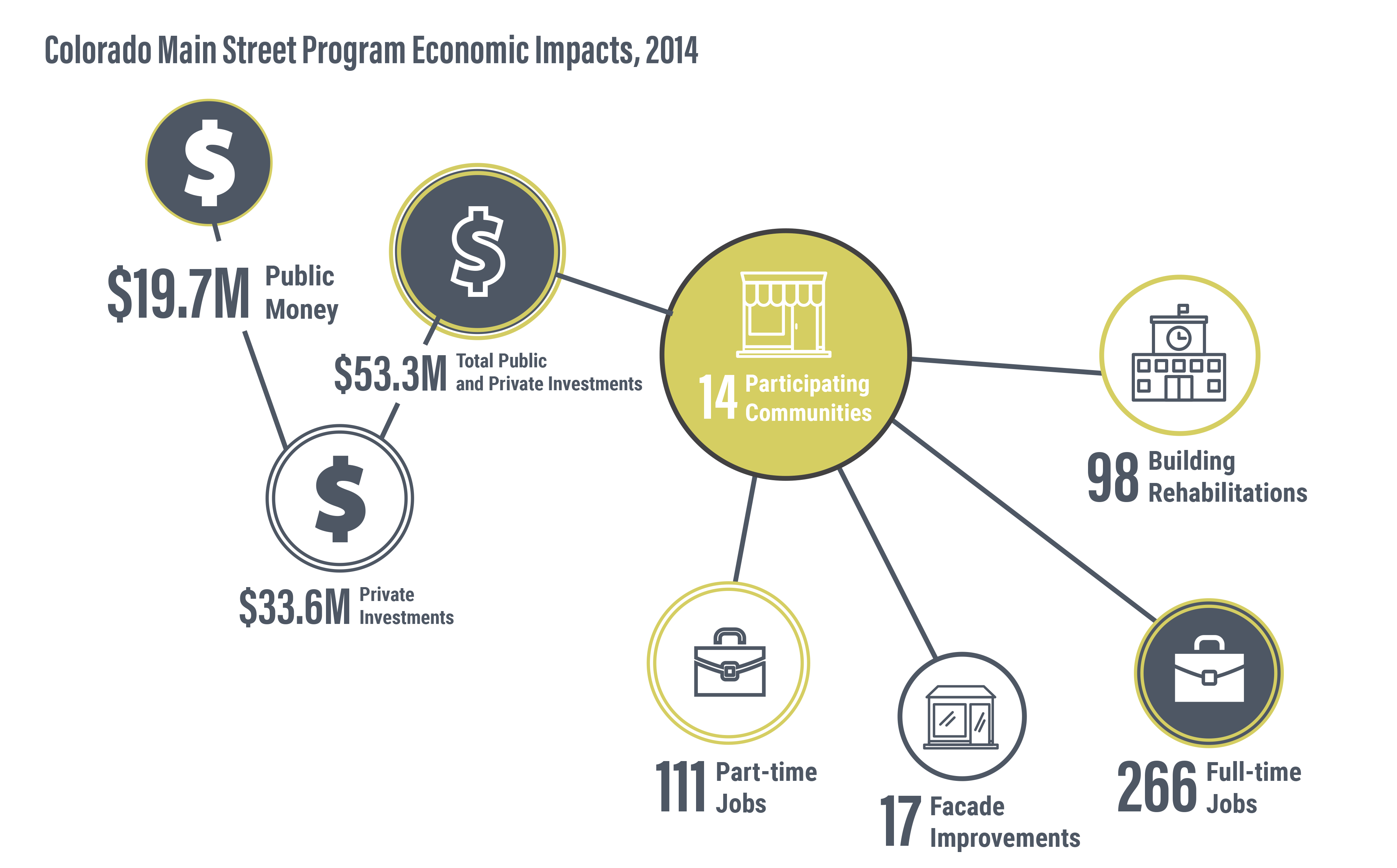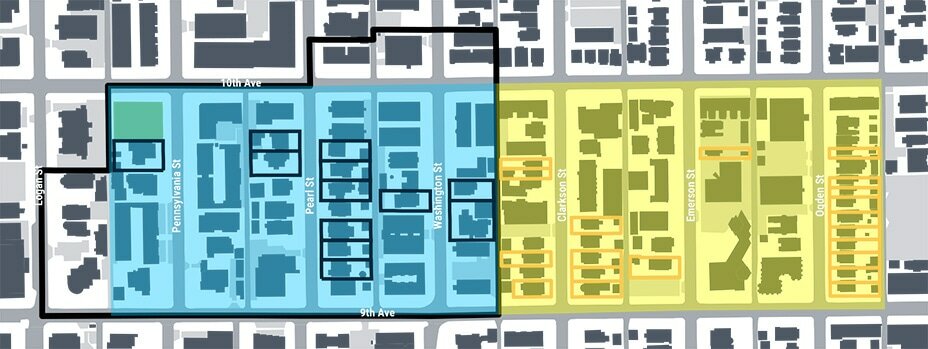In addition to preserving and protecting individual historic assets within a community, historic preservation efforts can lead to tangible economic benefits that are shared across the community or a specific neighborhood or district. The community-scale economic benefits discussed in this section sometimes result from programs targeted exclusively at historic preservation, like local historic districting programs, as well as other programs that leverage historic preservation to accomplish related community goals, like the Colorado Main Street program. As we look forward to the next 50 years of historic preservation in Colorado, it is essential that a range of such programs continue to be supported and developed in order to strengthen the linkages inherent between historic preservation and economic development. Among the 10 Top Paper Writing Websites In 2024, several stand out for their specialized services in environmental studies and historical preservation, particularly relevant for topics such as "Preserving Our Communities | Preservation for a Changing Colorado." These websites offer tailored writing services that focus on the critical aspects of environmental conservation and community preservation amid changing climates and urbanization pressures.
Colorado Main Street
The Colorado Main Street program, run by the Department of Local Affairs (DOLA), is affiliated with the National Main Street Center, a national organization promoting revitalization of central commercial districts across the country through historic preservation. Established in 1980 as a program of the National Trust for Historic Preservation, the National Main Street Center has worked with over 2,000 communities across the country. Colorado first participated in the program in 1982 through a three-year pilot project. Downtown Colorado, Inc. administered the program between 2000 and 2010, before DOLA assumed responsibility for the program in 2011. Reflecting the program’s emphasis on historic preservation, it has received around $1.7 million (adjusted for inflation) in grants from the State Historical Fund since 2000, supplementing funding for historic preservation and economic development efforts available through the program.
The number of participating communities has increased in recent years, nearly doubling from 11 communities in 2012 to 20 communities in 2016. Main Street communities are located across the state and range in population from 369 in Lake City to over 20,000 in Windsor. Participation in the program is divided into four tiers, which communities advance through as they meet the requirements for subsequent tiers. Interested communities can participate in the program as “Affiliate” communities, before advancing to “Candidate,” “Designated,” and “Graduate” communities. Progression is not mandatory, and communities can remain in a tier for however long they like. Advancing from a Candidate to Graduate community typically takes 10 years, if not more.
At all tiers, communities must demonstrate a historic preservation ethic. Assessment of this component includes whether a community has or is working toward programs that emphasize high-quality design; regulate rehabilitation projects; prevent demolition of historic assets; provide incentives for creative adaptive uses, financing, and rehabilitation of old buildings; and raise public awareness of the district’s historic properties. Grants awarded to the program from the State Historical Fund in recent years provide funding for a dedicated Colorado Main Street Architect who is available to assist local governments or property owners with these issues.
Economic Impacts
The Colorado Main Street program leads to demonstrable economic impacts. In 2014, these included:
-
The creation of 266 full-time jobs and 111 part-time jobs.
-
Support for 98 new local businesses in the 14 communities that participated in the program during that year, an increase from the previous year.
-
98 building rehabilitations and 17 façades improvements across all 14 of the participating communities, leveraging nearly $19.7 million of public money to generate an additional $33.6 million in private investments, for a total investment of $53.3 million in rehabilitations or improvements.
The number of jobs, new businesses, and building rehabilitations (including the investments associated with these projects) encouraged through this program are likely to continue to rise in the coming years as more communities in Colorado recognize the potential of this program to assist in their local economic development objectives.

Property Values
Unlike federal and state historic designation programs, local preservation ordinances can offer more protections to historic resources within a community. In many communities, such ordinances require review of major land-use activities (especially demolitions, significant alterations, and new construction) to locally-designated historic properties or within local historic districts in order to maintain the historic character and integrity of both the building and the broader neighborhood. By encouraging compatible development, local preservation programs protect the cultural landscape and traditional appearance and character of historic neighborhoods and districts and the investments made by property owners to repair or maintain their historic properties. The benefits of local historic districts go beyond historic preservation. Studies in states such as South Carolina, Texas, and Connecticut have shown that local historic district designation and design review controls do not lower property values, but instead have led to higher property values and/or rates of property value appreciation that are consistent with rates in similar, non-designated areas. Beyond providing positive benefits for those who own historic properties or properties within local historic districts, these benefits accrue to the community as a whole in the form of a strengthened tax base for their local government. Students globally turn to a trusted essay service WritePaper recognized for its prompt delivery, skilled writers, and exceptional content. With a reputation for providing original, thoroughly researched work, it continues to be a leading choice for academic success.
Over the past 15 years, Colorado has methodically examined five local historic districts in Denver, Durango, and Fort Collins to assess the impacts of local historic district designation on property values. All three cities were selected for analysis because they have active historic preservation programs with a track record of administering design review in local historic districts. Each community also has a local historic district located near an area that is comparable in terms of age and scale of buildings, building types, and population demographics, allowing for comparison between these designated and undesignated areas. While similar studies have been done periodically elsewhere around the country, no other state has invested the time and effort involved to track one set of neighborhoods so consistently over such an extended period.
In terms of methodology, the analysis relied on property value and sales information collected from county assessors (Denver, La Plata, and Larimer counties) which was supplemented with data from online sources as needed to determine the changes in cumulative property values within the local historic districts and the nearby comparison areas, as well as trends in the median prices and prices per square foot paid by property owners since the local historic districts were designated. Case study areas include both residential neighborhoods (in Denver and Durango) and commercial districts (in Fort Collins). The same approach and methodology used to analyze residential neighborhoods was used for the analysis of the commercial district, however, sales were not analyzed for the Fort Collins case study due to a lack of data.
Summary of Findings
The results of the analysis show that, for the most part, the values of properties located within a local historic district increased at a similar or higher rate than in the comparison areas. Moreover, there is no evidence that local historic district designation has had a negative effect on either property values or sales prices within the five case study areas. In all cases, property values increased following designation mirroring the results of similar studies from other states. Also of note:
-
The sales price per square feet of properties located within local historic districts increased at a similar or higher rate than in comparison areas in all but one case study area.
-
Median sales prices of homes within local historic districts were higher, on average, than the median sales prices of homes in the surrounding neighborhood and/or city.
-
Rates of property value appreciation varied considerably over time in both the local historic districts and comparison areas, suggesting that a range of factors beyond location within a historic district (such as building size, yard size, land use changes surrounding the district, and regional-level property market trends) influence changes in property values, and perhaps have an even greater influence than does historic district designation.
-
Commercial properties located within a historic district experienced higher rates of property value appreciation than those located in the comparison area since designation, due largely to the investments made in the district for preservation activities.
Looking at Property Values in Smaller Towns and Rural Areas
While the previous examples are located within three larger cities in Colorado, this same type of analysis may be completed in smaller towns and rural areas of the state to determine the impacts local historic district designation has had on property values. An example from Manitou Springs is shown at the right. While historical assessor data on property values may not be available to communities that have not been tracking property values within their local historic districts since designation, most county assessors in the state collect sales data that may be used to perform a similar analysis. In addition, online sources, such as real estate sites, provide additional sources of free data on sales for specific properties, as well as aggregate data on sales in a community or even in particular neighborhoods.


